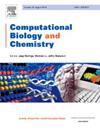用生物信息学方法研究沙蜥系统发育的进展。
IF 2.6
4区 生物学
Q2 BIOLOGY
引用次数: 0
摘要
探索生物的进化关系是一个不断发展的长期研究课题。这种研究产生了许多不同的分类数据库和各种系统类群的定义。迟发型动物门就是其中之一。迟发型生物是一个重要的研究领域,因为它们具有生物技术潜力和复杂的生物过程,有可能回答动物进化的问题。该门类内部的进化关系受到了严格的研究,不断有新的数据加入到文献中。在这些研究中,使用生物信息学方法提出具体的系统进化证据是一种普遍的技术。生物信息学是计算生物学的一个领域,它通过解释大量数据来计算和展示结果。它不仅广泛用于系统发育,还用于各种不同类型的分析,自创立以来一直在不断发展壮大。这篇综述讨论了生物信息学在蜥形纲系统发育中应用的各个方面、优势和方法。其目的是对生物信息学方法在提供系统发育结果方面的作用进行界定,并对未来前景进行阐述。本文章由计算机程序翻译,如有差异,请以英文原文为准。
Advances in bioinformatic approaches to tardigrade phylogeny
The quest to discover the evolutionary relationships of organisms is an evolving, long-time topic of research. Such research gave rise to many different taxonomic databases and various definitions of systematic groups. One such group is the phylum Tardigrada. Tardigrades are an important field of study because of their biotechnological potential as well as their complex biological processes, which have the potential to answer questions about animal evolution. The evolutionary relationships within the phyla are subject to rigorous research, and new data is added to the literature constantly. For these studies, a widespread technique is the use of bioinformatic approaches in order to put forward concrete phylogenetic evidence. Bioinformatics is a field of computational biology that interprets large amounts of data in order to compute and demonstrate results. It is widely used not only for phylogeny but also for various different types of analyses and has been growing as a field since its foundation. This review discusses the different aspects, advantages, and methods of the use of bioinformatics in tardigrade phylogeny. It aims to put forward a defining picture of how the bioinformatic methods prove useful for providing phylogenetic results and elaborate on future perspectives.
求助全文
通过发布文献求助,成功后即可免费获取论文全文。
去求助
来源期刊

Computational Biology and Chemistry
生物-计算机:跨学科应用
CiteScore
6.10
自引率
3.20%
发文量
142
审稿时长
24 days
期刊介绍:
Computational Biology and Chemistry publishes original research papers and review articles in all areas of computational life sciences. High quality research contributions with a major computational component in the areas of nucleic acid and protein sequence research, molecular evolution, molecular genetics (functional genomics and proteomics), theory and practice of either biology-specific or chemical-biology-specific modeling, and structural biology of nucleic acids and proteins are particularly welcome. Exceptionally high quality research work in bioinformatics, systems biology, ecology, computational pharmacology, metabolism, biomedical engineering, epidemiology, and statistical genetics will also be considered.
Given their inherent uncertainty, protein modeling and molecular docking studies should be thoroughly validated. In the absence of experimental results for validation, the use of molecular dynamics simulations along with detailed free energy calculations, for example, should be used as complementary techniques to support the major conclusions. Submissions of premature modeling exercises without additional biological insights will not be considered.
Review articles will generally be commissioned by the editors and should not be submitted to the journal without explicit invitation. However prospective authors are welcome to send a brief (one to three pages) synopsis, which will be evaluated by the editors.
 求助内容:
求助内容: 应助结果提醒方式:
应助结果提醒方式:


